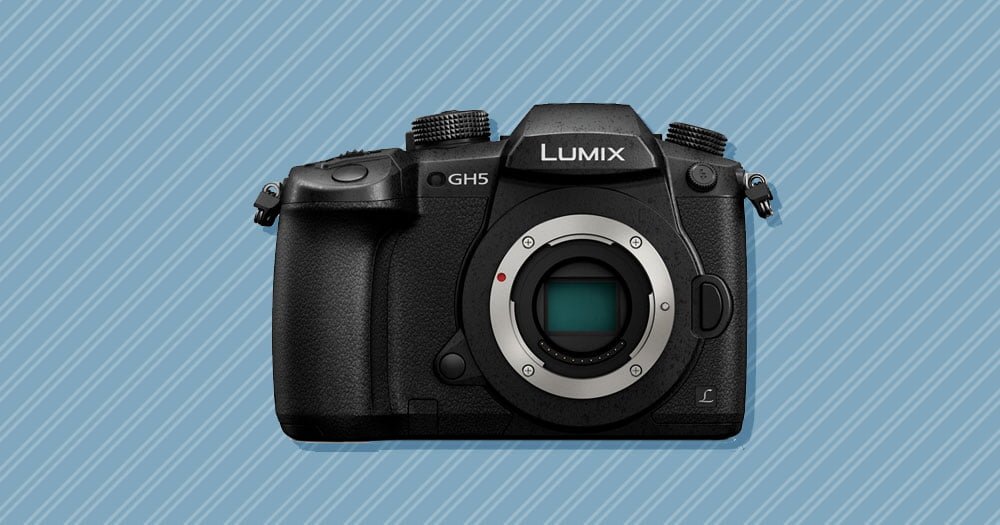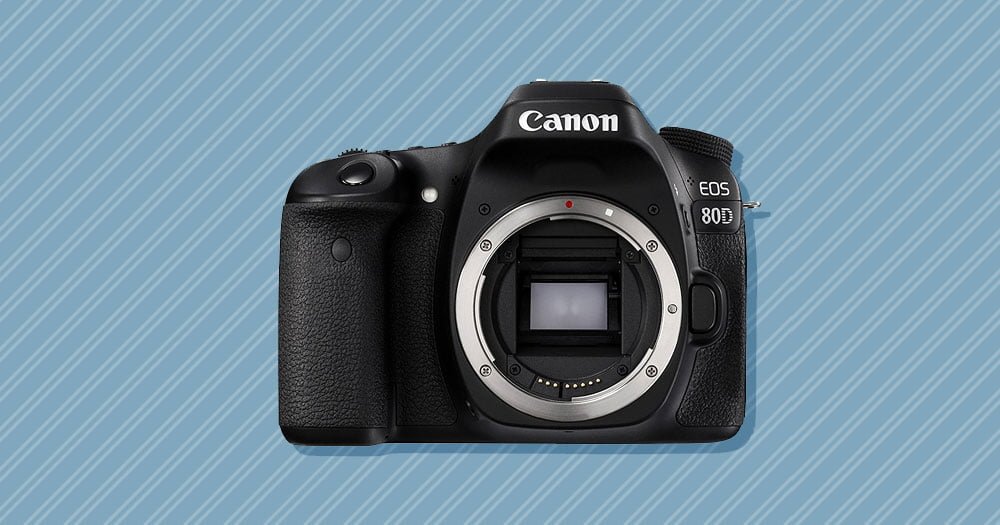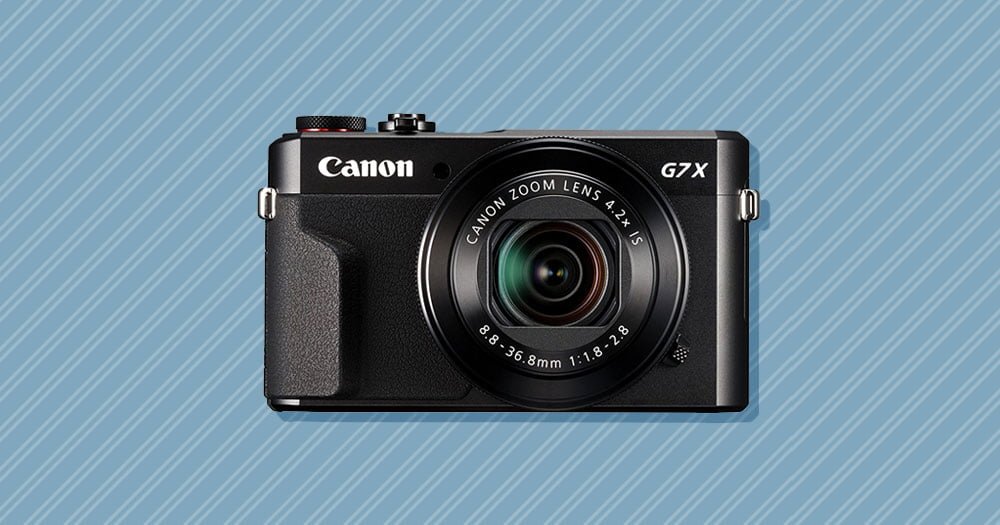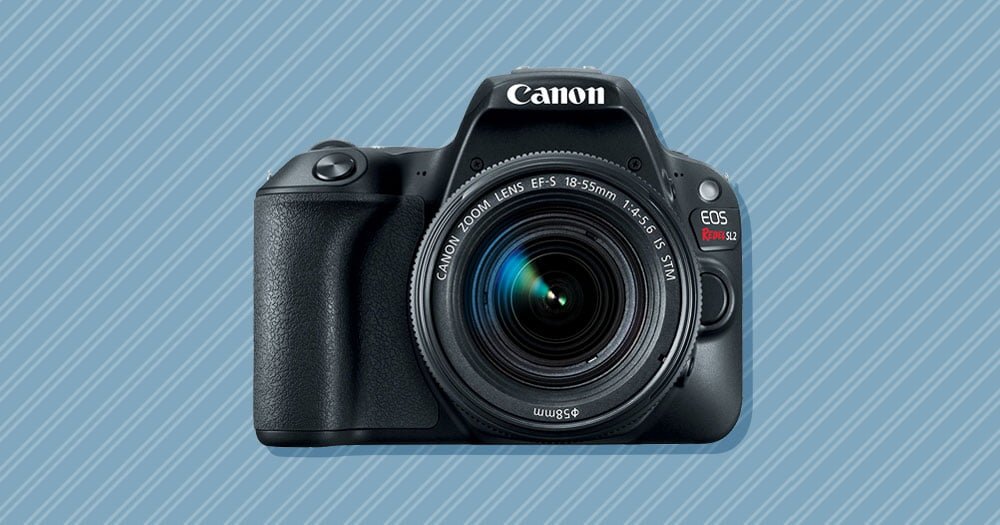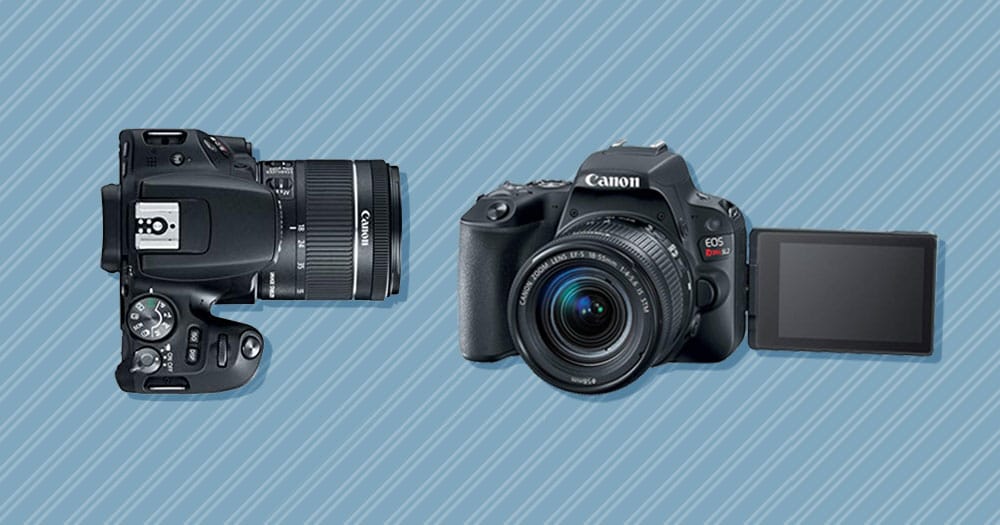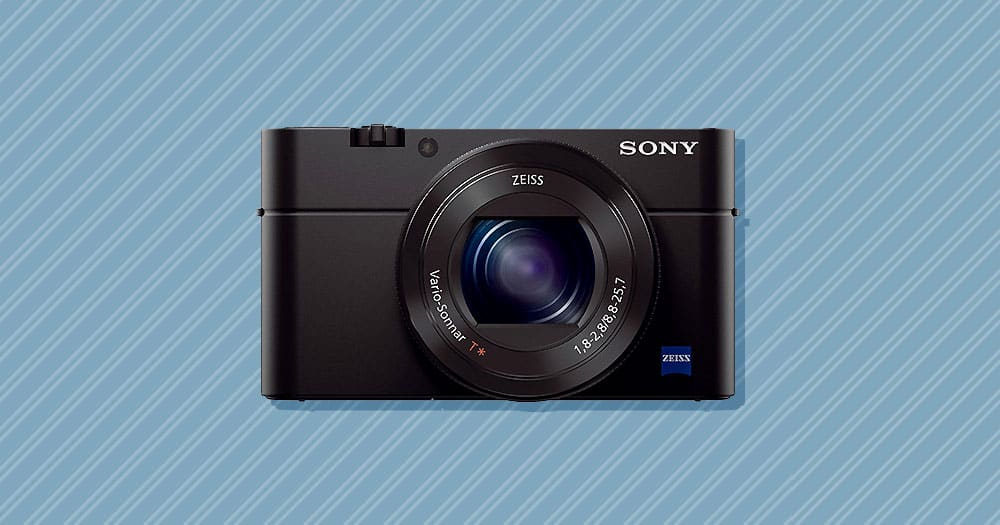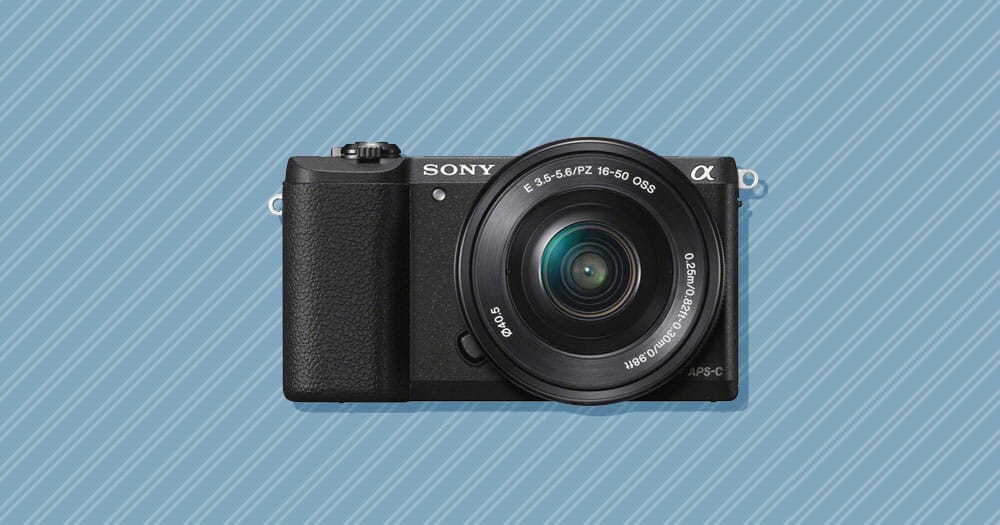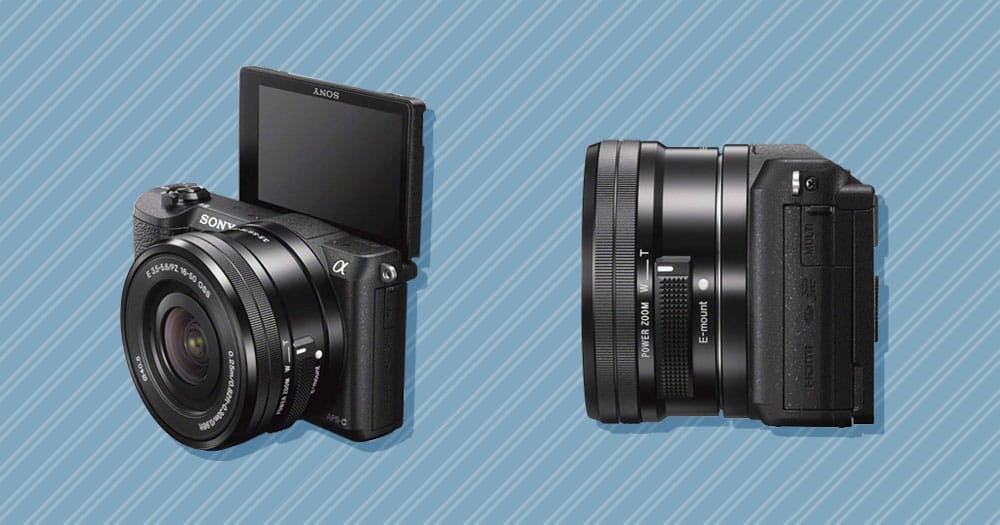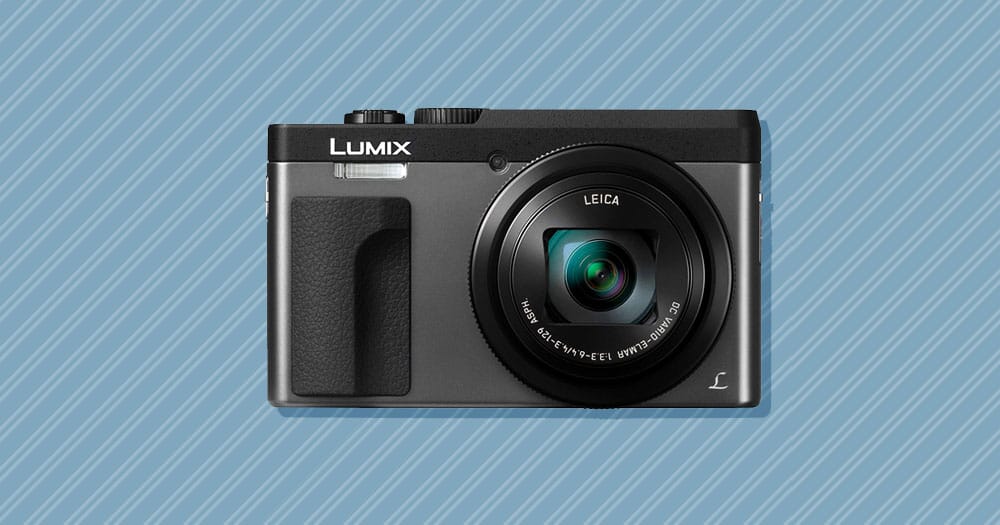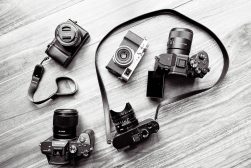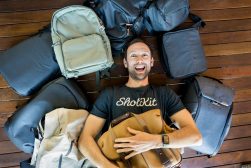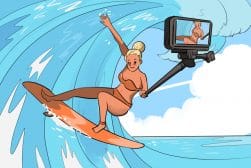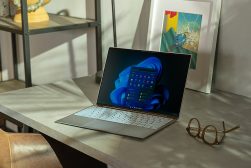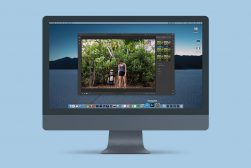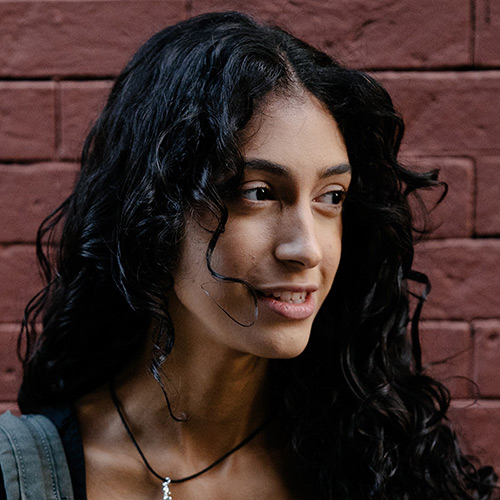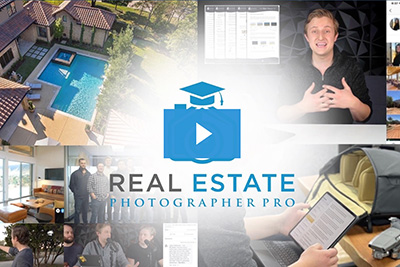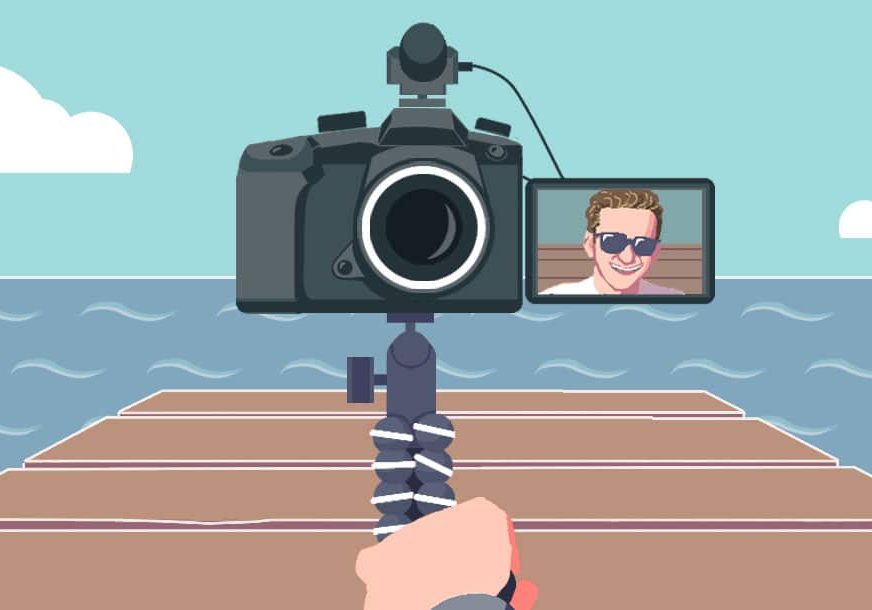
Best Camera for Vlogging in 2023 for All Budgets
Looking to start vlogging on YouTube? Check out the best cameras for vlogging of the year in this in-depth review, including Vlog camera must-have features.
By Usnea Lebendig | Last Updated: March 24, 2023
YouTube vlogs have seen massive growth in popularity, so I’ve put together a post to help you choose the best cameras for vlogging of the year.
I explain the camera features that can make your vlogging experience fun and easy, and help you understand what makes a good vlog camera.
Starting your own video blog isn’t difficult, and if you’re consistent and post good quality content, you can even earn money from vlogging.
This review will help you choose the right camera for the job, so let’s jump right in!
Best Camera for Vlogging in 2023
| Image | Product | Details | |
|---|---|---|---|
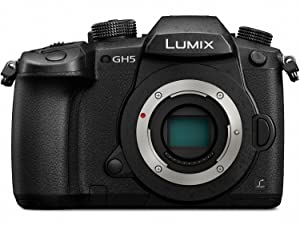 | Panasonic GH5OUR #1 CHOICE |
| View Price → |
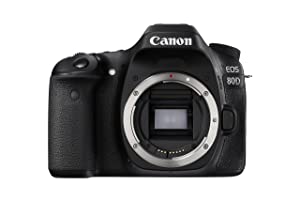 | Canon 80DTOP RATED |
| View Price → |
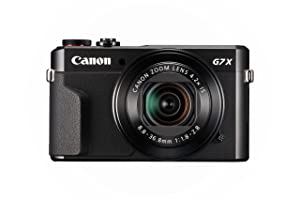 | Canon G7x Mark ii#1 COMPACT |
| View Price → |
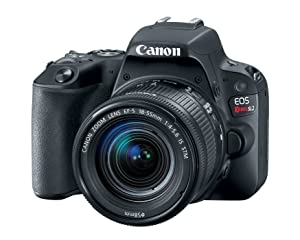 | Canon SL2GREAT VALUE |
| View Price → |
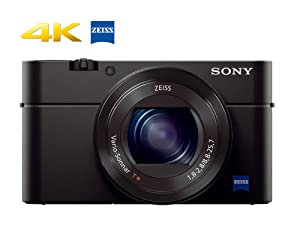 | Sony RX100 Mark IV |
| View Price → |
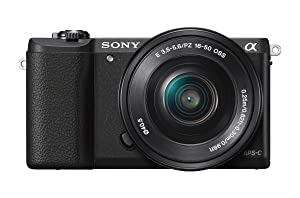 | Sony a5100 |
| View Price → |
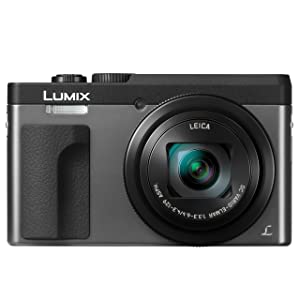 | Panasonic ZS70S |
| View Price → |
1. Panasonic Lumix GH5 | Best All Round Vlogging Camera
Megapixels: 20.3
Dimensions: 5.45 x 3.86 x 3.44″ (138.5 x 98.1 x 87.4 mm)
Weight: 645 g (1.42 lbs / 22.72 oz)
If you’re looking for full-featured best vlog cameras with 4K video capabilities and DSLR-like ergonomics, look no further than the excellent Panasonic Lumix GH5 micro four thirds mirrorless camera.
It’s nice to see that camera companies are specializing in their various niches with their flag ship cameras. For Nikon and Canon, it’s the all-round professional stills camera, and for Panasonic, it’s video.
Panasonic have stuck with their tried-and-tested 20 megapixel micro-four-thirds sensor with the GH5, a sensor format that attracts some confusion due to its diminished size. After all, why would one invest in a camera with a sensor smaller than APS-C, and only about half the size of a full frame sensor?
While an MFT sensor will never be able to deliver the class-leading performance of larger sensors in low light, they’re still a great option in normal lighting conditions, and offer benefits such as smaller, lighter and more affordable bodies and lenses (see the best micro-four-thirds lenses).
The Panasonic Lumix GH5 certainly isn’t a small, lightweight camera, but it offers video performance normally associated with much bigger devices. Low-light performance can’t match something like the Canon 6D Mark II, but it’s still good enough for most vlogging situations.
Before heading any further, we should probably confront the elephant in the room – namely the Lumix GH5 vs Lumix GH5s… (note the ‘S’!)
Yes, the Panasonic Lumix GH5s has a bigger sensor, and numerous other small improvements like being able to shoot at 4K 60/50p recording in Cinema 4K (4096 x 2160) – a world-first, no less.
So why didn’t I include it here in this list of the best vlogging cameras of the year?
Well, yes it is a great camera for updating your vlog, but does the price increase really justify the new features, and moreover, do they actually benefit the average vlogger? I’ll let Kai Wong answer that in this video:
So, let’s return to the Panasonic Lumix GH5 (not the ‘s’!), shall we?! Video quality is excellent. Shooting in 4K at 60fps produces some of the most stunningly detailed video footage I’ve seen out of a prosumer grade camera.
Frame rate, resolution and bitrate options are abundant, and sure to please even the most hardcore video enthusiast. There’s an option to shoot 4K footage at a cinematic 24fps using a richer, 4:2:2 10-bit colour space that offers wider dynamic range for grading in post-production.
Vloggers who enjoy using time lapse footage can take advantage of the in-camera frame rate control that lets you shoot down to just 2fps.
Shooting at a faster frame rate to slow down the footage in post is a popular technique for vloggers – shooting at 180fps in 1080P on the Lumix GH5 allows you to create some beautifully smooth slow-mo footage.
Everything can be recorded onto 2 SD memory cards at the same time, or you can set up the second memory card to act as overflow for when the first fills up. The GH5 is actually the only recommended camera in this list that offers dual SD card slots.
An interesting feature for vloggers who need to pull thumbnails for their YouTube videos is the Lumix GH5’s 6K Photo Mode, that lets you shoot video at 30fps, then extract any of those frames in post as an 18mp stills image.
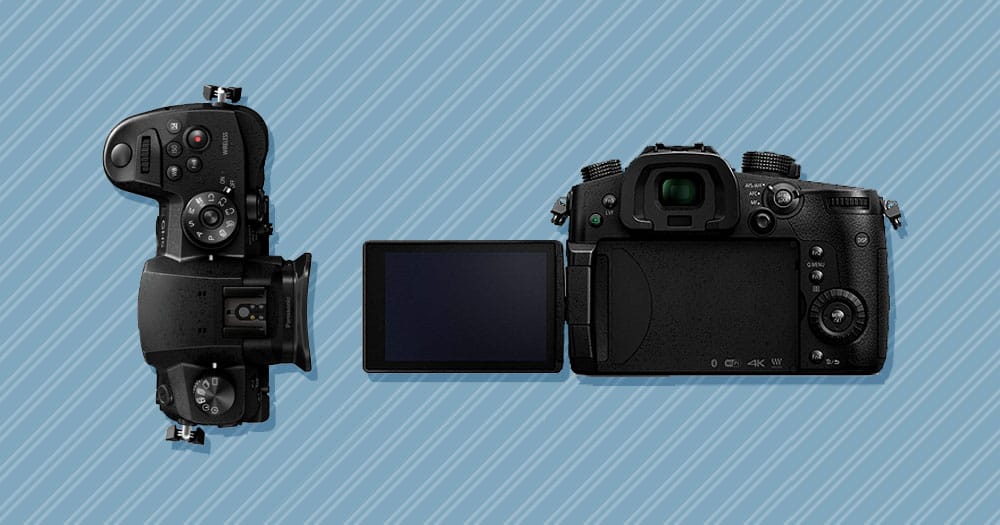
Run and gun documentary style video shooting is made much easier thanks to impressive image stabilization in both compatible lenses and the body – by far the best OIS I’ve seen implemented on a camera at this price point.
The 225-point AF system together with face-detection makes focusing and tracking your face while vlogging a cinch. The fully articulating 3.2” flip out touchscreen is vivid, detailed, well-constructed and a pleasure to use.
When shooting first-person vlogs, a wide angle lens is normally preferable to allow for arm-length shooting which includes your face and as much of the environment as possible. Thanks to the Lumix GH5’s excellent image stabilization and face detect auto focus, first-person filming is also made much easier.
If you’re shooting a scene where you can control the position of your subjects, there’s a great feature on the Lumix GH5 where you can automatically transition between pre-set focus points.
It’s worth mentioning that in low light, the AF performance does tend to struggle, so the use of an external LED light is recommended if you’ll be vlogging at night a lot.
Check out influential YouTube vlogger Casey Neistat’s other minor gripes about this camera in the video below – watch from minutes 2 to 7.
As for audio, the built-in microphone features an improved wind-noise-reduction algorithm to help you get clearer audio footage when not using a dedicated mic.
For those wishing to use a hot-shoe mounted mic, the Lumix GH5 features that all essential 3.5mm mic input, as well as a headphone input too, for you to monitor your recordings.
Last year Casey Neistat switched from using his trusty Canon 80D to using the Panasonic GH5 for vlogging, since Canon had yet to produce a 4K DSLR, aside from the bulky and expensive Canon 5D Mark IV.
The Panasonic Lumix GH5 feels as if it were designed by users rather than engineers, with YouTubers in mind.
Other random but genuinely useful features include the ability to start/stop filming using the shutter button (which feels more natural than the red record button); USB-C connectivity for lightning-fast SD to computer transfer rates; 5 customizable buttons, and DSLR-like long battery life.
One potential drawback of the Panasonic Lumix GH5 for vloggers is its size and weight, which could become an issue if shooting with the camera for long periods. At 645 g (1.4 lbs) it’s an acceptable weight if it were an entry-level DSLR camera, but as a micro four thirds mirrorless camera, it’s definitely on the heavy side.
So in summary, if you can put up with that little bit of extra weight, and you’re prepared to use an external light when the MFT sensor struggles in low light, the Lumix GH5 really is an excellent filmmaker’s camera. I think it’s safe to say that it’s the best vlogging camera of 2023.
It’s also made my list of the best mirrorless cameras too.
2. Canon EOS 80D | Best Vlogging Camera under $1000
Megapixels: 24.2
Dimensions: 3.09 x 5.47 x 4.14″ (78.5 x 138.9 x 105.16 mm)
Weight: 730 g (1.61 lbs / 25.75 oz)
If you’re looking for Canon cameras for vlogging, you’ve no doubt come across the Canon 80D. Chances are, you’ve also come across the Canon 70D, and Canon SL2 as well.
Truth be told, these are all excellent Canon cameras, but let’s look at why I think the Canon 80D is the best of all of them here in 2023.
First off, the Canon 80D ticks all the main boxes when it comes to the hardware – it has a flip screen with touch screen interface, built-in wireless, optical image stabilization, an external mic port, external headphone port and long battery life.
It is, however, a bit on the heavy side – 730 g (1.6 lbs) isn’t unreasonable for a pro-grade DSLR camera, but as a camera to be used solely for vlogging, it may present some issues for those wishing to handhold it at arm’s length for long periods.
One thing that should also be mentioned is that by investing in a Canon DSLR for vlogging, you’re opening the door to the wonderful world of Canon lenses too – my recommendation is the Power to Create 2-lens kit which gives you a wide angle zoom and a fast lightweight prime for an amazing price.
You’ll also be able to take advantage of affordable, lightweight lenses such as the excellent Canon 10-18mm f/4.6-5.6 wide angle zoom – one of the most popular lenses for vloggers who use Canon cameras, and one of Casey Neistat’s Canon 80D recommended lenses too.
The class-leading auto-focus on the Canon 80D is one of the main reasons why so many YouTube vloggers are using this camera. The 45 sensitive cross-type AF points coupled with Canon’s excellent Dual Pixel CMOS AF means that the camera can acquire and lock on focus in milliseconds.
Being able to touch the detailed and rich 3” articulating screen while recording to instantly snap a subject into focus is an amazing feature, and works impressively well in low light too, with focusing performance down to EV-3.
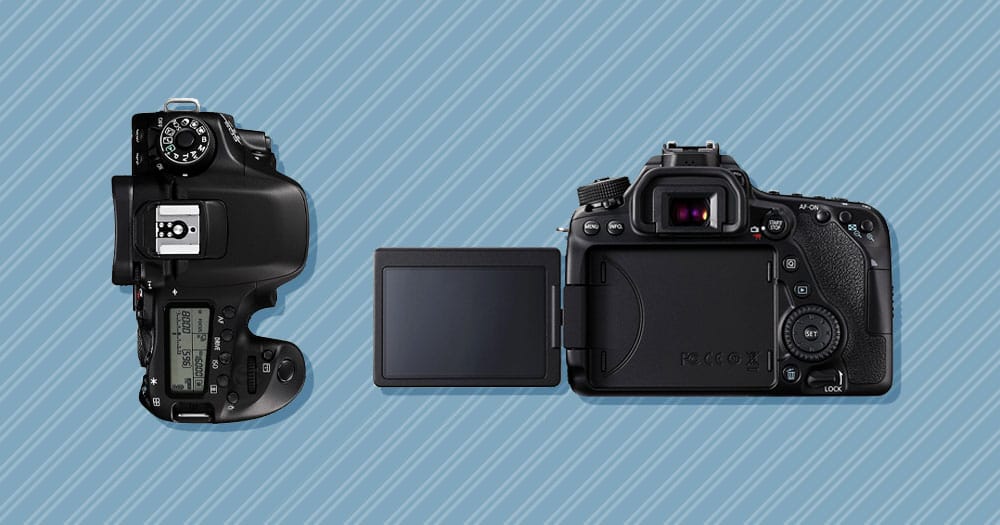
The usefulness of Canon’s Dual Pixel AF technology was a bit of a moot point for stills photographers, but for video shooters and vloggers, it’s a real advantage, allowing you to make cinematic style focus transitions with ease.
Switching between subjects with the Canon 80D is as simple as touching the screen, and combined with the predictive power of Movie Servo AF and the wide spread of AF points, even moving subjects can be smoothly tracked.
Vlogging usually requires you to be filming yourself a lot, and thankfully the face-tracking auto focus capabilities of the Canon 80D are second to none.
Movie image quality is excellent, as to be expected from a Canon camera for pretty much made for vlogging.
There’s no 4K video recording which may or may not be an issue for you. Having the ability to crop into your footage during post can be an advantage, and the extra detail is nice, but you have to consider whether the viewer will be taking full advantage of your 4K footage – most will be watching it on their mobile phones, after all.
Despite the lack of 4K recording, you can record full 1920 x 1080 HD at 30 and 24 fps in MOV, and at 60/30/24 fps in MP4 mode – being able to record 60fps in 1080p is a great new feature, meaning you no longer have to downgrade to 720P for slow motion footage.
Other MP4 options include HD (1280 x720) at 60/30 fps. There’s also an HDR movie mode (1920 x 1080) at 30 fps, and a new time lapse feature (not available on the 70D).
Being able to record straight to MP4 is useful for when you want to upload straight to web, whereas the MOV format is better for maximizing dynamic range, with its higher bitrate and less compression.
If you absolutely need to have 4k video recording capabilities at this price point, the Sony a6500 is an option, and also offers even better auto-focus than the Canon 80D…
However, and this is a big downside, it doesn’t have a flip screen to view yourself while recording – hence me not including it in this list of the best vlogging cameras.
Other improvements over the Canon 70D (another great vlogging camera), include a headphone jack so you can monitor your audio while recording, a digic 6 processor for better ISO (max of 25,600), more AF points (45 vs 19), more white balance fine tune settings, NFC for file transfer, the ability to change manual audio levels while recording (both mic AND headphones), and the ability to control AF speed transitions.
That last one is a great feature, allowing you to create lovely slow focus pulls, just by sliding your finger from one subject to another on the touchscreen. The Canon 80D makes full use of the Dual Pixel technology to make this feature work flawlessly – better in fact than the Sony or Panasonic vlogging cameras.
Another small but notable improvement to previous iterations of the Canon 80D is the placement of the mic/headphone input jacks, which have been moved forward so as not to interfere with the swivelling of the touchscreen – a sign that Canon is really listening to its users.
As long as you don’t need to record in 4K, the Canon 80D doesn’t really have many negatives. It doesn’t have in-body image stabilization, but several of Canon’s lenses do, such as the Canon 18-55mm f/3.5-5.6 IS II – a cheap, lightweight, versatile lens with great built-in image stabilization – I highly recommend you buy it with this camera.
Another small downside is the lack of zebra stripes to spot highlight blowouts, and also the lack of focus peaking to aid with manual focus. There’s also no way to magnify your image while recording to further double check your focus point.
Finally, you can’t control AF servo speed and track sensitivity unless you’re in AF single mode, meaning you can’t take advantage of those features while using face-tracking which is a bit odd.
Despite these minor gripes, there’s one huge factor that influences so many vloggers to invest in the Canon 80D, and that’s its price.
At almost half the price of the Lumix GH5, you’re getting a camera with better AF and low light performance, as well as gaining access to the entire arsenal of amazing Canon glass.
I’d go as far as to say that the Canon 80D is the best vlogging camera under $1000. Yes, the Canon 70D and Canon SL2 may be more affordable and great for vlogging too, but the 80D with its improved features really does take the biscuit.
Read more: Best cheap video camera for filmmaking on a budget
3. Canon G7x Mark II | Best Compact Vlogging Camera
Megapixels: 20.1
Dimensions: 1.65 x 2.4 x 4.15″ (41.91 x 60.96 x 105.41 mm)
Weight: 319 g (0.7 lbs x 11.3 oz)
After the huge popularity of the first generation Canon G7x compact camera, photographers and vloggers around the world were delighted in 2016 with the release of its successor – the Canon G7x Mark II.
Keeping the same 24-100mm equivalent f/1.8-2.8 zoom lens and 20MP sensor, the Mark II improves on the original in several ways, with an updated exterior design and a faster DIGIC 7 image processor.
There’s still no 4K video capture option, but high quality video can be captured at 1080/60p, and also includes 24p for a more cinematic look to your vlog footage. Image quality is great for a camera this size, with sharp edges outlining subjects and plenty of clarity.
When shot wide open at f/1.8 or zoomed right in to a close up subject at f/2.8, it’s easy to blur the background and achieve that sought after bokeh-look that’s not commonly associated with a compact camera for vloggers.
Being able to throw background/foreground elements out of focus using the wide aperture of the Canon G7x Mark II’s lens is incredibly useful when vlogging, giving you the ability to direct the viewer’s eye away from distracting elements and towards your the subject of your footage.
The 24-100mm equivalent zoom range is also useful, and particularly impressive for a compact camera. This kind of zoom range on a DSLR or mirrorless camera would require the use of a bulky lens, making the entire set up unsuitable for extended vlogging.
Shooting in sunlight with large apertures is usually impossible without the use of ND filters, and fortunately, the Canon G7x Mark II has one built right in.
At the click of a button, you can simulate sunglasses for your lens, allowing you to shoot at f/1.8 in broad daylight and still produce a shallow depth of field – something that can help elevate your work from other vloggers.
If you’re planning on filming your own face like most vloggers choose to, the combination of Canon’s excellent face tracking technology and a gorgeous 3″ flip up screen will help you keep everything nicely composed and your face in sharp focus, even when moving. It also makes the Canon G7x Mark II a great camera for selfies.
Racking focus back and forth is easy and effective, using the responsive touchscreen to literally tap areas you want to be pulled into focus.
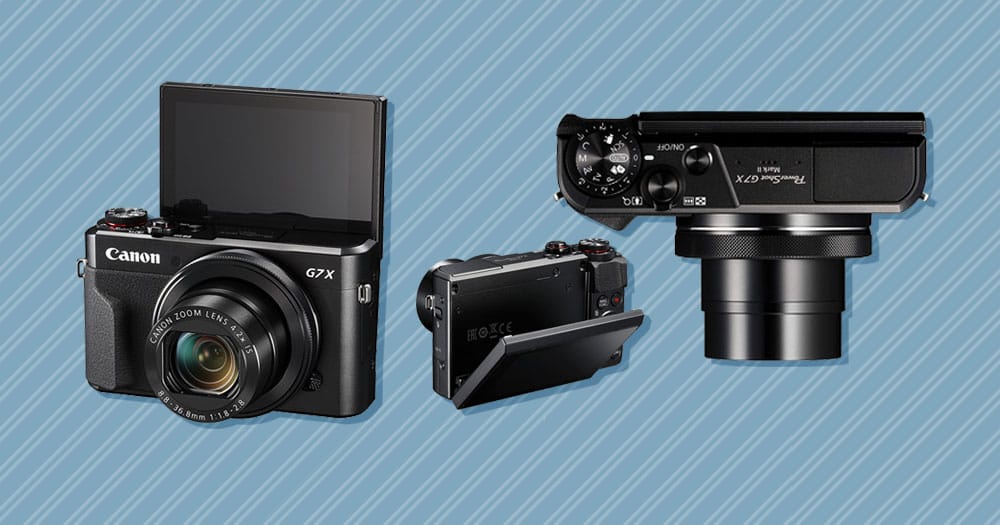
Another great feature that makes the Canon G7x Mark II ideal as a compact camera for vlogs is the dual sensing optical image stabilization.
Usually, it’s notoriously hard to get smooth video footage when hand-holding compact cameras, due to their size/shape. They’re not really intended for run-and-gun style filming which typically introduces too much camera shake, but thankfully the Canon G7x Mark II is different.
With 3 levels of OIS to experiment with, it’s surprising how much your footage can be smoothed out at the medium or high settings with no visual degradation in quality – great if you don’t have a gimbal.
It’s worth noting that in order to achieve this, your resulting video will be slightly cropped, and you may notice slight differences in colour/exposure.
Battery life is excellent for a compact camera, and extending battery life via a portable battery charger is now a possibility thanks to the mini-USB input. This is clearly a big plus for all-day vlogging, but one small catch lies in the restriction to roughly 4GB of filming per segment – at 1080p 60fps that equates to roughly 30 minutes.
It’s rare for vloggers to shoot for such extended periods in one ‘take’, but it’s still perhaps something to be aware of.
Time-lapse is well implemented on the Canon G7x Mark II, and provides a great opportunity for vloggers to increase production value via this popular story-telling technique – just remember to use a tripod, preferably as small and compact as the camera, like a smartphone tripod.
As with all Canon cameras, WiFi is well implemented too, giving you the ability to remotely trigger a recording, or frame your video from a distance. Being able to transfer your creations via WiFi to a smartphone is also a handy feature for quick social media updates in the field.
As for audio, the G7x Mark II includes a wind filter that attempts to cut down wind noise, but due to the positioning of the two mics on top of the camera, you may still struggle to get really clear audio, even in low winds.
There’s no mic nor headphone jack, so there’s no good way to actually improve on the audio captured by this camera, save buying some fur windscreen stickers – not ideal, but they do help.
The Canon G7x Mark II also includes focus peaking (see photography terms) and an ‘auto level’ feature that keeps your horizons straight. You can even switch between auto and manual focus with just a tap of the screen, and adjust focus even when you’re still recording.
While there are many vloggers who prefer to use manual mode for their video capture, I’d say that the majority enjoy the speed and convenience of one of the auto modes. Video capture in auto on the G7x Mark II is reliable enough for fast-paced filming and changing lighting conditions, or you can adjust settings manually via the touchscreen.
In manual mode, you can adjust shutter speed, aperture, exposure compensation and ISO during filming with just a couple of touches – an essential feature for cameras that YouTubers use.
There’s also the ability to adjust exposure compensation using Auto ISO while in manual exposure mode, so that the camera changes the ISO, rather than the shutter speed or aperture which may adversely affect the desired look of your shot. This is a feature that some higher end cameras don’t even offer.
All in all, despite its shortcomings and relative age, the Canon G7x Mark II is still the best compact camera for vlogging of the year. It’s great value for money and packs some great features into a body not much larger than your smartphone – ideal for lightweight, no-fuss vlogging.
4. Canon EOS Rebel SL2 (200D) – Best Intro Vlogging Camera
Megapixels: 24.2
Dimensions: 2.7 x 4.8 x 3.6″ (68.58 x 121.92 x 91.44 mm)
Weight: 453.59 g (1 lb / 16 oz)
I’m guessing that this is the camera that you were expecting to see further up this list of the best vlog cameras for the year…
In fact, if there was a category of best Canon vlog camera under $600, the Canon EOS Rebel SL2 would be it!
It’s also the camera that I’d recommend to a vlogging beginner, especially when purchased with the 18-55mm STM – a great value for money lens that’s bundled with the SL2 here.
You should also consider opting for the white version too – after all, how often do you see an all-white DSLR camera with a silver lens?!
So what exactly makes the Canon SL2 so damn-good? Well, a whole host of things actually. Let’s start with the hardware…
Everything is built around Canon’s tried and tested 24.2MP CMOS APS-C sensor, with the latest DIGIC 7 processor delivering fantastic AF and low light performance that’s not normally available in a camera at this price point.
You may have hesitated before buying a DSLR for vlogging, put off by the bulk that’s normally associated with that kind of set up. The Canon SL2 is the exception of the rule here, weighing in at a measly 453 g (1 lb) – due to the fantastic ergonomics, it actually feels lighter than some compact cameras!
Size is typical of an entry-level camera too, making is a nice option for mounting on a mini tripod such as the Joby Gorillapod 1k.
Build quality is decent, with upgraded metal shutter button and dial giving a slightly more high-end feel to an otherwise plasticky budget vlogging camera.
The all-important flip screen is another stand out feature, with snappy touch screen operation that puts Sony’s half-baked efforts to shame. Taking full advantage of Canon’s incredible face tracking and dual pixel AF, the EOS Rebel SL2 has no problem locking onto a subject and never letting go.
Smooth, cinema-like rack focusing is a piece of cake too, with the tap-to-focus taking care of the focus transition for more professional looking video footage. The in-built e-stabilisation is pretty good at smoothing out the footage too.
The Canon EOS Rebel SL2 (otherwise known as the 200D or Kiss X9) is actually the cheapest Canon with dual pixel AF, and thus an affordable way to take advantage of not only this technology but also a great way to gain access to the enviable Canon lens lineup too.
The 18-55mm STM that comes bundled with the SL2 is a versatile lens that’s fine for most situations, but investing in some faster glass such as the excellent Canon EF-S 17-55mm f/2.8 is a quick way to create much nicer looking footage with the camera.
Check out the video below where the reviewer recommends the Canon SL2 with the Power to Create 2-lens kit, which includes the versatile ultra-wide angle 10-18mm f/4.5-5.6 and the super sharp 50mm f/1.8:
Video capture maxes out at 1080 at 60fps, allowing you to create buttery smooth slow motion footage when slow down in post. There’s no 4k, but most YouTube vloggers won’t miss it.
One unique feature of a DSLR for vlogging at this price point is the external mic input, and the full manual controls over audio levels. Functionality such as this indicates that the Canon EOS Rebel SL2 is really a camera aimed at video shooters looking for a budget way to get pro-grade audio and video footage.
While some vloggers choose to leave all their settings in manual, leaving at least the ISO up to the camera is still a popular choice. It’s nice to see that while using Auto ISO on the Canon SL2, you’re able to bump the exposure up or down during filming by using exposure compensation to adjust the ISO, and not have to worry about the camera automatically adjusting shutter speed or aperture to get to your desired look.
The addition of Bluetooth and GPS will please some vloggers who need to trigger their filming remotely, transfer footage to smartphones, or tag their footage with location data. GPS works great but zaps the battery, so should be used sparingly.
With all this amazing performance at an affordable price, what exactly makes the more expensive and bulkier Canon 80D better than the Canon EOS Rebel SL2 as a DSLR camera or vlogging? Well as it turns out, not a great deal actually…
The 9-point AF system is pretty basic on the SL2, especially when compared to the 45 points on the 80D. Tracking subjects all the way across the screen shouldn’t be as good with a camera with fewer AF points, but for video, thanks to the impressive dual pixel AF and face tracking on the SL2, you don’t really notice.
There are more dials, buttons, an external headphone input and a top LCD screen on the Canon 80D, and the overall build quality with its weather sealed body is much better. On the flip side, it’s also 277 grams (0.5 lbs) heavier and a good deal bigger than the Canon SL2, which is actually the smallest DSLR in the world.
The 80D uses the long-lasting LP-E6 batteries which easily outlast the batteries used in the SL2. Then there’s the faster frame rate for stills shooters and greater viewfinder coverage.
As you can see, when pitting the Canon 80D vs Canon SL2 in this way, the benefits of spending more on the 80D don’t really seem to be worth it, at least for the newcomer to vlogging… and that sums up the comparison really – I’d recommend the Canon SL2 without hesitation if you’re just starting vlogging and need a full featured, budget priced DSLR for film.
However, if you’ve been vlogging for a while already and need an upgrade, I’d recommend the Canon 80D with its slightly superior features, some of which are indispensable for professional videographers (such as the headphone port, for example).
All in all, the Canon EOS Rebel SL2 is a great value for money vlogging camera. I’d call it the best budget camera for vlogging, but ‘budget’ sounds like I’m doing it a disservice! It’s a pro-level camera packed into an entry-level body, which will suit the needs and exceed the expectations of many vloggers here in 2023.
5. Sony RX100 Mark IV – Best Camera for Outdoor Vlogging
Megapixels: 20.1
Dimensions: 4 x 1.6 x 2.29″ (101.6 x 40.64 x 58.1 mm)
Weight: 298 g (0.66 lbs x 10.5 oz)
The original Sony RX100 was something of a landmark release, with DSLR-like image quality and continuous shooting speeds, all packed into a slimline metal body the size of a pack of playing cards.
We’re onto the 7th iteration in the series, so why am I here recommending a camera released in 2015, the Sony RX100 Mark FOUR?!
Well, for stills shooters or those with bigger budgets, sure, go ahead and drop more money on a more recent model RX100 – the Sony RX100 Mark VI is no doubt the best version on paper, and that 24-200mm equivalent lens is simply incredible. However…
For video shooters, there comes a point where the small improvements don’t really justify the jumps in price… and that sweet spot for so many YouTube vloggers seems to still be the Sony RX100 Mark IV.
At its core, the Mark IV shares the same 1″ 20.1MP Stacked CMOS sensor of its successors, offering excellent image quality, most notably with accurate colours, sharp details and impressive low light performance.
Then there’s the excellent 24-70mm equivalent f/1.8-2.8 lens, that delivers a versatile zoom range and fast variable aperture for blurring the background and superior low light shooting.
Build quality across the Rx100 range is excellent – a lightweight, all metal chassis that looks great. It has to be said however that the ergonomics of having such a slippery, flat sided camera are questionable, and I highly recommend you spend an extra $14 on a grip attachment, to save yourself a costly drop.
One omission on the Mark IV which is present in the Mark V and models thereafter is phase detection AF. Without getting into the technicalities, a camera with phase detection AF will focus faster than one without, particularly in low light situations.
Is it worth the $100-ish price jump from the Mark IV to the V? Well, only if you’re comparing the cameras head to head, which most people won’t, and even then the difference won’t be so apparent in decent light.
While we’re on the topic of price, it’s worth considering whether the $150-ish extra cost of the Sony RX100 Mark IV is worth it when compared to the Canon Gx7 Mark II which we discussed earlier.
Well, the long and short of it is this – if you need to record in 4k, get the Sony. If you don’t, get the Canon.
4k gives you better image quality and allows for some more flexibility in reframing/zooming/stabilization when editing, but it’s also a much larger file to work with, and most mobile viewers will never be able to tell the difference.
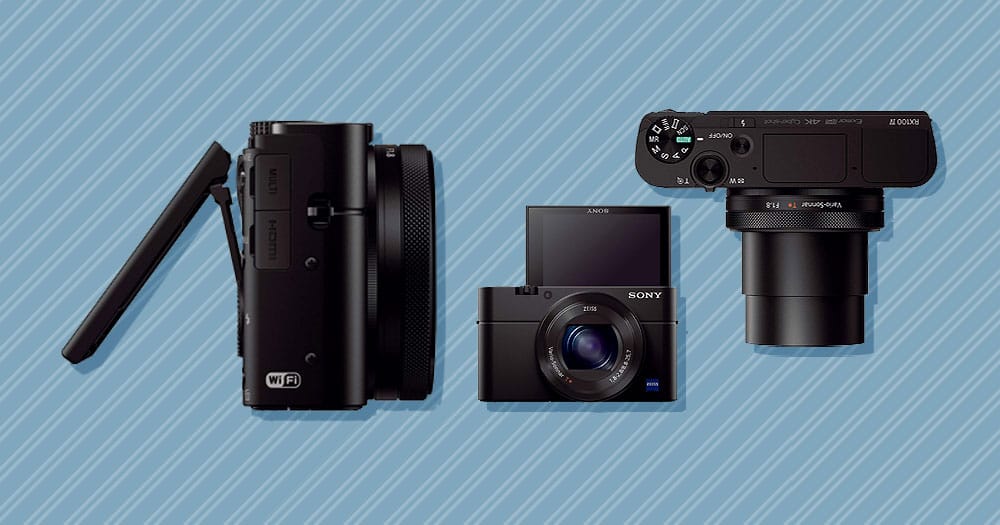
The Sony RX100 Mark IV can shoot 4K video at 30fps, and offers the much-heralded S-Log2 video profile, which provides more latitude when colour grading during editing.
A key feature is High Frame Rate video, exclusive to Sony cameras, and one of the main reasons why this compact Sony has been one of the most popular compact cameras for YouTube in recent years.
HFR allows you to shoot at up to a staggering 960fps for super-slow-motion output, albeit at a slight loss in quality. Shooting up to 500 fps seems to be a good sweet spot to retain decent quality (1676 x 566), even when the camera upscales the file back to full HD.
You can only shoot for 2 seconds in the HFR mode on the RX100 Mark IV (it’s increased to 4 on the later models), but having the ability to do these crazy-fast frame rates on a compact camera at this price point is still mind-blowing. If you have interesting content to film, this silky-smooth super-slo-mo can really add a nice touch to your vlogging footage.
Check out the video below which shows how cool even the banalest things can look when shot in Sony’s HFR mode:
One thing to note – the more you use the 4k video recording capabilities and HFR feature of the Sony RX100 Mark IV, the more the already-poor battery life will suffer. At only 45 minutes of approximate video shooting, it’s not great by any means, but interestingly enough, it’s actually better than the Mark V!
Unsurprisingly for a compact vlogging camera of this size, there’s no headphone or mic posts on any of the RX100 models. There’s also no touchscreen, which is a nuisance, especially since the actual flip out screen is nice and big and functions well.
Not having touchscreen for a vlogging camera is almost a deal-breaker for some, but since you can rely on the RX100 Mark IV’s auto focus in most situations, it’s not all bad. Just don’t expect to be able to quickly rack in and out of focus with a slide of the finger, like you can on the Canon vlogging cameras.
Sony actually lags behind the other camera companies with its touchscreen capabilities even on its top end Alpha full frame cameras, which is strange since it’s so technologically advanced and innovative in other areas.
On the topic of the flip out screen, one ‘technique’ you’ll see many vloggers use when filming their own faces is to wear sunglasses to hide their eyes, which are no doubt darting back and forwards to the forward facing LCD screen to check focus, exposure and composition.
As for the Auto settings on the RX100 Mark IV, they’re reliable enough that you can largely delegate the handling of exposure to the Auto modes, so you can really concentrate on story telling… which is after all what vlogging is all about.
Successful daily vloggers like Casey Neistat won’t care about uploading footage with frequent focus drop-outs or exposure inconsistencies, as long as the story is being told in an entertaining or informative fashion.
In this way, a camera like the Sony RX100 Mark IV may not offer the best AF out there, but thanks to stellar 4K video quality and some truly innovative features, it offers all an average vlogger would ever need, all squashed up into a tiny body that can slip into your back pocket.
6. Sony a5100 | Best Vlogging Camera under $500
Megapixels: 24.3
Dimensions: 4.31 x 1.38 x 2.48″ (109.6 x 35.07 x 63 mm)
Weight: 283 g (0.62 lb / 9.98 oz)
If you’re looking for the best vlog camera under $500, the Sony a5100 is at the top of the pile. Despite being released back in 2014, it’s still an absolute bargain of a camera for vloggers who want professional looking video quality in a small, lightweight package.
Before you start screaming “take my money!!” at the screen, let’s get a few of the negatives of the Sony a5100 out the way first. They may be deal-breakers for some, but for others, they may just be minor gripes that you can live with.
First off, no 4k. Big deal? Hardly. I really don’t consider 4k video recording capabilities necessary for vlogging, even here in 2023. Most vloggers don’t like importing 4k footage in to their video editor, since it slows down their workflow, especially when using After Effects of any of its alternatives.
What’s more relevant though is that there’s no audio input jack. The built in stereo mic is ok for recording ambient sounds, but it’s definitely not a tool to record good quality spoken audio. For this, you’ll need to invest in a separate Lav mic (like this great all-in-one kit from Rode), and sync your audio later.
Recording audio separately in this way isn’t a major pain, but it does add some extra work in post production.
There’s also no EVF, which may be a hindrance if you shoot a lot in very bright sunshine when the rear LCD may be hard to see, and build quality is rather plasticky and cheap feeling, especially when compared to the Sony a6000 series cameras.
On the other hand, it’s thanks in part to its consumer-grade build that the price of the Sony a5100 is so reasonable, and also the size/weight is actually not that much more than the Sony Rx100 series… except that this offers the huge advantage of inter-changeable lenses.
The Sony a5100 offers the same 24MP APS-C sensor and e-mount lens compatibility as its bigger brothers, meaning you can take advantage of all the best lenses for the Sony a6000 too.
In fact, the Sony a5100 is one of the smallest, lightest cameras with an APS-C sensor, which is the same size sensor as some DSLRs that cost upwards of $2,000.
Auto Focus is excellent, with face tracking working just as well as on the excellent Sony a6000. As a camera used for vlogging, you won’t have to worry about the Sony a5100 keeping your face in focus whatever you’re doing.
Another rare feature for a compact camera under $500, is the ability to shoot 1080p at 60fps, meaning the Sony a5100 is great for filming sports or any fast moving subject that would otherwise be blurry, and also for slowing down your footage in post for some smooth slow-motion footage.
One of the features that sets the a5100 apart from other cameras is its use of the XAVC S video codec. XAVC S codec has a higher dynamic range, resulting in more editing latitude of your video in post-production, as opposed to other codecs like MP4 (just remember to use an SDXC memory card, like the ones recommended in this list of accessories for Sony cameras).
Another nice feature on the Sony a5100 is the ability to shoot XAVC S video and MP4 simultaneously. This allows you to share the small, compressed MP4 file as you record it via WiFi, while saving the much higher quality XAVC S to your memory card.
As for lenses, you can get the kit lens bundled with the a5100 for a bargain price or spend a little more and get the excellent 50mm f/1.8 lens included too – a great way to aid low light shooting and create out-of-focus bokeh elements in foreground and background. (Related: Sony e mount lenses.)
With its relatively slow f/3.5-5.6 aperture range, the kit lens does have its limitations in low light, but as an everyday walk around lens, the 16-50mm zoom range is versatile and good for vlogging.
It also has image stabilization (‘OSS’) baked in to help smooth out video footage, which is a huge plus since the Sony a5100 lacks in-body stabilisation.
Sony often releases several similar cameras that overlap in some features, but neglect some other ones. With the release of the Sony a5100, the vlogging world rejoiced when it saw the 3″ front facing flip out touchscreen – the only one available in its Sony compact camera lineup.
Why are there not more Sony cameras for vlogging with a front-facing screen like the a5100? I have no idea, and find it especially annoying that a flip-screen isn’t included on the full frame Sony cameras.
Although the Sony touch capabilities are somewhat limited when compared to Canon vlog cameras, being able to touch your face to focus, or touch the screen to zoom in to check your manual focus accuracy, are really useful features.
Other things like focus peaking and zebra stripes to help you spot blown out highlights are features not commonly seen on a compact vlogging camera, or even much more expensive DSLRs.
Battery life, however, isn’t great, but at least you’re able to maintain a charge using a portable battery pack plugged into the mini-USB port.
In summary, the Sony a5100 offers a lot of amazing features in a point and shoot camera sized body, all for a very attractive price. (Related: why a5100 is better than a5000.)
As a primary vlogging camera, you may find the lack of mic input to be a hindrance, but as a second camera for b-roll footage, or as a camera to be used in conjunction with a separate mic, it really is unbeatable.
7. Panasonic Lumix ZS70 (TZ90) | Best Budget Vlogging Camera
Megapixels: 20.3
Dimensions: 4.41 x 2.65 x 1.62″ (112.0 x 67.3 x 41.2 mm)
Weight: 322 g (0.71 lb / 11.36 oz)
If you’re looking for the best budget camera for vlogging, I hope you’ve read this far. The Panasonic Lumix ZS70 (also known as the TZ90) manages to pack a lot of features and the ability to record in 4K into a device that costs under $400.
A key stand out feature not normally seen on a camera of this price is the 3″ articulating touch screen, which allows you to tap to pull focus while recording . You can also adjust exposure settings while recording via the well-implemented touch screen – a huge plus for vloggers who need to quickly adjust their scene mid-recording.
The headline feature is obviously the 4K recording option, and it’s available at 25 or 30fps.
However, you do need to put up with a cropped view of your image when shooting in 4K. If you want to capture video at the full sensor width, you’ll need to reduce the quality to 1080, although you’ll notice a vertical crop due to the different aspect ratios – 16:9 vs 4:3.
4k Live Cropping mode takes advantage of the 4k frame to provide a digital pan and zoom feature at 1080p resolution. You simply select a start and end point of the clip by tapping the screen, then select an overall time of the clip for the camera to simulate a smooth pan/zoom, as if using a tripod.
Another nice touch is something called ‘Snap Movie’, which allows you to set up a ‘focus pull’ in advance, by tapping the screen to define the start and end focus positions, then record a short clip of between 2 and 8 seconds.
The Panasonic Lumix ZS70 records 1080p at up to 28Mbit/s in AVCHD or MP4 modes. In addition to 1080p 50/60, the MP4 modes are 1080p 25/30 and 720p 25/30.
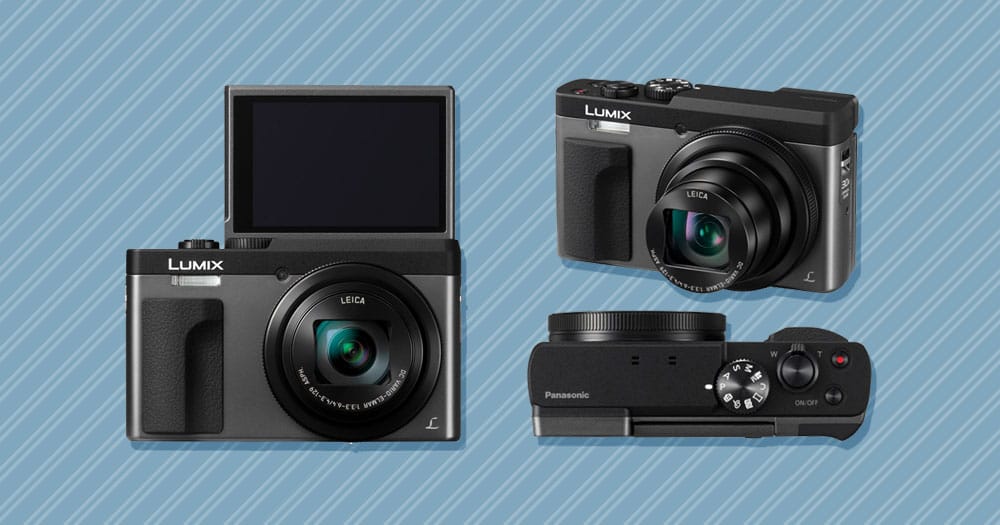
In good light, the quality of the 4k footage from the Panasonic Lumix ZS70 is surprisingly good, and the built-in mic does a decent job at picking up audio… which is fortunate since this camera lacks an external mic port.
The five-axis in-built optical image stabilization does alright at smoothing out the small bumps associated with hand holding a compact camera, and can make run-and-gun style vlogging footage much less nauseating to watch.
Due to the 4k crop, the OIS doesn’t work quite as well when recording 4K video, with most of the effect being reserved for HD video and stills.
There’s also a Level Shot function which detects and maintains the image’s horizontal line, even if the camera is tilted.
As a budget camera for vlogging, the Panasonic Lumix ZS70 isn’t able to offer the same lightning fast Auto Focus as the other cameras in this roundup. However, focusing speeds are speedy enough for the majority of situations, and the AF-tracking system in conjunction with face-detect and Continuous AF hand does a good job at finding a subject’s face and locking onto it.
The rubber grip and thumb rest are a nice addition to an otherwise slippery metallic shell, but I’d still recommend investing in a mini tripod like these to ensure you have something more substantial to grip hold of.
With some truly unique options and the ability to record in 4k, all for a bargain-basement price, the Lumix ZS70 is great for vloggers on a budget, or for use as a backup camera.
Panasonic cut some corners to be able to offer such an affordable compact camera for vlogging, but nothing that should get in your way of producing some great looking video content for your YouTube channel.
What Features Do Good Vlog Cameras Share?
I’ve listed the features I consider most important when choosing a camera for vlogging below.
I’ll be referring to these features in each vlog camera review, so you can quickly see how each camera stacks up compared to the competition.
These features will help you come up with the best vlogging camera setup for your needs, so let’s dive in:
- Flip Screen – vlogging by its very nature usually means that you’ll need to film yourself. Having a flip screen (a rear LCD which can face forwards in the direction of the lens) makes this much easier, helping you ensure you’re in focus, correctly exposed and your shot is framed correctly. Sure, you could use an external field monitor like these, but these tend to make the entire set-up heavy and unwieldy.
- Touch Screen – adjusting controls on a front-facing screen is much easier when the camera has a touch screen.
- Good AutoFocus – cameras which offer fast AF, or features like face tracking and dual pixel AF are preferable for keeping your subject in focus, even when moving.
- Good Audio – an external Mic input is preferable to allow you to hot-shoe-mount a mic (or use a wireless microphone) for better quality audio. It also means you won’t need to waste time syncing your audio during post-production.
- Good Image Quality – Being able to shoot in 4K can be advantageous for superior video quality, but it’s also useful for image stabilization and reframing/cropping during post. Good high ISO performance is a plus for shooting in low light.
- Optical Image Stabilization – In-camera, in-lens, or dual OIS is preferable for a steady shot without the need for a gimbal.
- Lightweight – holding a camera + lens + mic at arm’s length can become tiring quickly…
- Fast Frame Rates – Being able to shoot in 60fps or higher (preferably in 1080p) will allow you to create good looking slow-motion footage when editing.
- Long Battery Life – carrying spare batteries is a must while vlogging, but a longer battery life is favourable for extended shooting duration.
- Weather Proofing – vlogging should be able to take place come rain or high water!
- Time Lapse Mode – time lapse footage is popular b-roll footage for vloggers.
- Dual Memory Cards – not essential by any means, but a nice in-field backup solution or way to expand your vlogging capacity.
- Wifi/Bluetooth/NFC – for framing your shot and triggering the record button remotely, as well as transferring footage to a smart device to share on social media.
The cameras in my review below contain a varying number of these features. You need to spend a lot of money if you want a camera that has all the features, so it’s usually a case of deciding what’s most important to you, then seeing if that camera falls in your budget.
For me, the perfect vlog camera needs to have a front facing (flip) touch screen with excellent auto-focus and the ability to plug in an external hot-shoe mountable mic.
If the camera is compact and lightweight too, this is a bonus, but not essential. I don’t really care about 4k, since it slows down the post production too much.
FAQs
What camera does every vlogger use?
Most popular vloggers these days are using mirrorless cameras from Sony or Canon. However, many are still using the Canon EOS 70D, which has remained popular for years for its great image quality, fast auto focus and robust body.
Which camera is best for vlogging for beginners?
The Canon Powershot G7 Mark III is a good vlog camera for starters since it’s affordable, easy to use, and compact enough to take everywhere.
Is the GoPro good for vlogging?
Since GoPros are waterproof, simple to use and compact, they’re a great option to have in your pocket every day for vlogging.
However, the fixed aperture, wide field of view, and short battery life aren’t ideal for longform vlog content.
Audio quality isn’t great on older GoPro models either – the more modern GoPros have better mics.
Is a phone enough for vlogging?
Modern iPhones and Android cell phones shoot in 4K, have great battery life, image stabilization and have the ability to edit and share videos on the go, making them ideal vlogging cameras.
One addition to make phones even better for vlogging is a rig of some sort, so you can attach other lenses, mics, lights and grips to extend their features.
Is the Canon PowerShot SX740 good for vlogging?
Yes, the built-in Wifi, flip screen, lightweight body (around 9.7 oz), 4K video, and excellent image stabilization make the PowerShot suitable for vlogging.
However, it might not offer the best quality, and the autofocus can be a bit unstable. So, it’s more of an entry-level vlogging camera.
Best Cameras for Vlogging | Final Words
Finding the best camera for vlogging of the year can be a confusing task – not because there’s a lack of them, but because there are just so many cameras available that can be used for filming short videos for YouTube or Vimeo.
I’ve tried to narrow down my recommendations above to just the cameras with flip screens, but in doing this, I’ve ignored a whole host of other cameras that vloggers are using every day to create entertaining video content.
Having a flip screen may be essential for one vlogger, but maybe it’s not so important to you. Just as having 4k recording ability may be necessary for one person, but not the next.
You need to have a think about what you need in a camera to start vlogging easily. Keep it simple, especially when you’re just starting. And make sure to create a great YouTube banner to entice new viewers to subscribe to your channel.
The story is much more important than the equipment. If your story is entertaining enough, no one will care if it’s shot in 4k, or even if everything is properly exposed or in focus. Just make sure your story is great, and the rest will come with experience.
You might also be interested in our article on the best cameras for recording podcasts.
I hope you found a camera suitable for vlogging – now get out there and hit record!





